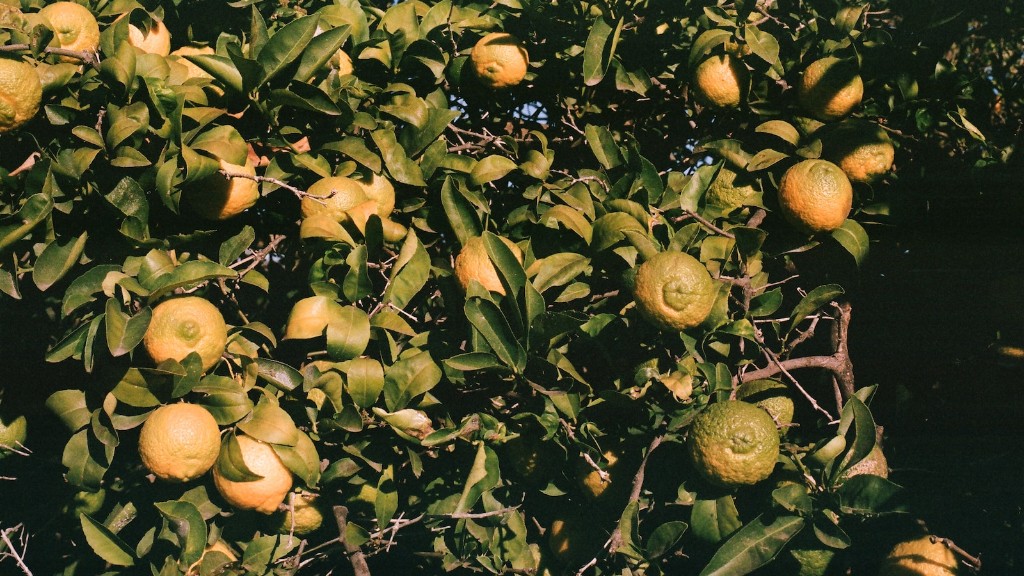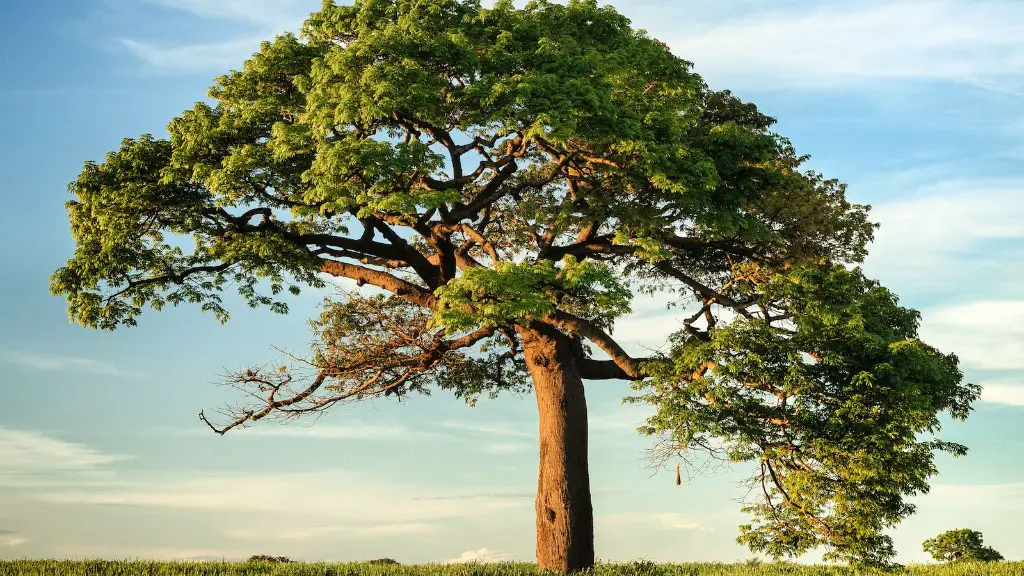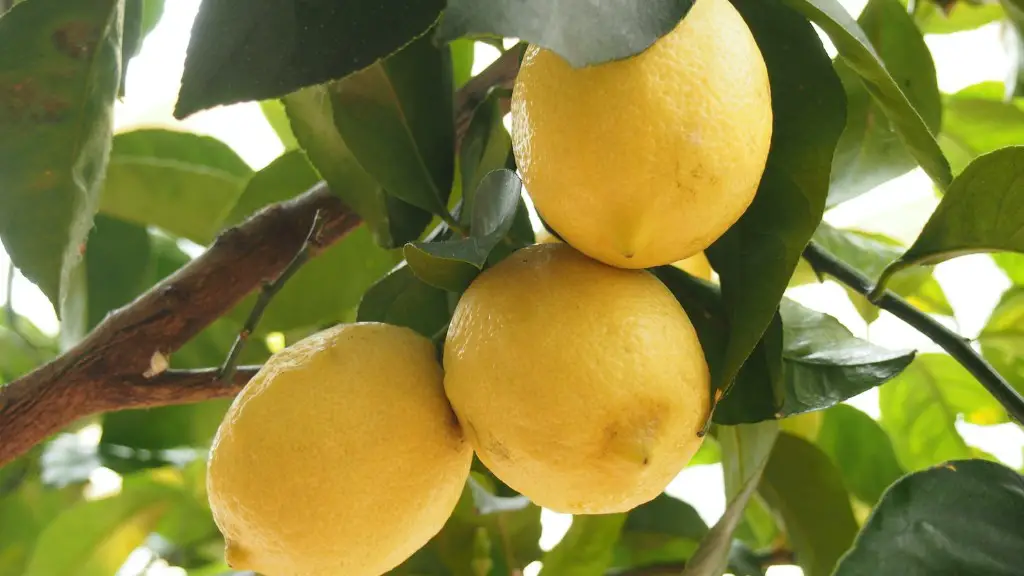Meyer lemon trees require just the right amount of water for optimal growth and production of fruit. It can be tricky to get the balance right, but with the right guidance, you can make sure that your Meyer lemon tree stays healthy and productive. Here’s how to water a Meyer lemon tree properly.
When to water your Meyer lemon tree is one of the most important factors in keeping it healthy. Irrigate it regularly with plenty of water to keep the soil evenly moist, but not soggy. Water it early in the morning, around sunrise, so that the water has time to evaporate before evening. Avoiding watering in the evening will help prevent fungal diseases, such as powdery mildew, from developing.
When watering your Meyer lemon tree, make sure to use enough to thoroughly moisten the soil. It’s a good idea to use a soil moisture meter to determine whether the soil is sufficiently moist. It’s also important to water your tree deeply and frequently. Regularly deep watering will help keep the soil from drying out, promoting strong root growth.
In addition to deep and frequent irrigation, it’s important to give your Meyer lemon tree enough fertilizer. Fertilizing your Meyer lemon tree regularly with a balanced fertilizer will help keep it healthy and supply it with the nutrients it needs to produce abundant fruits. Fertilize your tree three or four times a year, and it should produce plenty of fruit.
Lastly, Mulching a Meyer lemon tree is an important part of proper care. Mulch helps retain moisture in the soil and reduces evaporation. Additionally, it helps suppress weed growth and adds organic matter to the soil, both of which help promote healthy root growth.
Lemon Tree Pruning
Pruning a Meyer lemon tree is essential for optimal growth and fruit production. Pruning not only reduces the size of the tree and the amount of fruit it produces, but also improves air circulation. This helps to prevent fungal diseases from developing. Prune your tree in early spring before it begins to bloom. Remove any dead, diseased, or damaged branches, as well as any branches that are crossing or rubbing against each other.
Prune young Meyer lemon trees to promote a strong, upright structure. Encourage new growth in the center of the tree by removing any large, vertical branches that are growing straight up. This will open up the tree, give it a better shape, and improve air circulation. You should also remove any small, weak branches that are competing with larger, stronger branches, as they will not give you much fruit.
Prune your Meyer lemon tree to keep it manageable and to maintain a desired shape. When pruning, use sharp, clean, disinfected shears and make sure to cut the branches at the base. This will encourage new growth and keep your tree looking neat and tidy.
Protecting the Lemon Tree from Pests
Meyer lemon trees are very susceptible to insect pests, such as aphids and scale insects. To protect your tree, it’s important to keep the leaves and branches free of debris and weeds. Make sure to regularly inspect your tree for pests and if you spot any, treat them immediately. There are many different options when it comes to pest control, so you’ll want to choose the right one for your tree.
In addition to controlling pests, you should also try to create an environment that is unfavorable for pests to breed. This means cutting back overgrown vegetation and keeping the area around the tree free from weeds, leaves, and debris. If your tree is near a water source, such as a pond or a river, it’s particularly important to protect it from pests.
Additionally, you should also practice proper sanitation for your Meyer lemon tree. Cleaning up dropped fruits and leaves, and pruning away dead or dying branches will help to prevent infestations. Finally, you may also want to consider introducing beneficial insects into your garden to help control pest populations.
Protecting the Lemon Tree from Disease
Meyer lemon trees can be susceptible to disease, so it’s important to pay close attention to the health of your tree. If you spot discolored leaves, mildew, or wilting, take steps to treat it right away. The best way to protect your tree from disease is to keep it well watered and well fertilized. Additionally, you should prune diseased branches immediately, and clean up the area regularly to prevent disease from spreading.
It’s also important to keep your Meyer lemon tree free from weeds, as this can help prevent the spread of fungal diseases. If you have a particularly dry climate, it’s important to irrigate your tree more frequently, as this will help to prevent leaf scorch. Finally, you should also consider engaging in preventative measures such as crop rotation, companion planting, and healthy soil practices.
Harvesting Meyer Lemons
Harvesting Meyer lemons is a rewarding experience! The fruit is ready to be harvested when it is bright yellow in color and fragrant. You should avoid harvesting immature or unripe fruit, as it won’t have the same flavor. Begin by testing one of the fruits to make sure it’s ripe before harvesting the entire tree.
As you pick the lemons, you should snip them off the tree using sharp, clean shears. Make sure to keep the stem intact, as this will help the lemon to stay fresh. You may want to wear gloves while harvesting the lemons to protect your hands from the acidic juice.
Meyer lemons can be stored at room temperature for a short period of time, but it’s best to keep them in the refrigerator for longer storage. Cut lemons should be used as soon as possible, as they do not keep well. Once the lemons are harvested, you can enjoy their delicious flavor in drinks, pies, and salads.
Protecting Lemon Trees from Cold Weather
Meyer lemon trees can be sensitive to cold weather, so it’s important to take steps to protect them during the colder months. If possible, move your tree indoors during cold snaps or to a sheltered area. If you choose to keep your tree outside, make sure to wrap it in burlap or fabric to protect it from severe temperatures.
It’s also important to make sure the Meyer lemon tree has plenty of water during the cold months. This can be done by using a soaker hose, drip irrigation, or hand-watering. Additionally, you should also use mulch to insulate the soil and reduce the risk of frost.
When the temperatures start to drop, you may also want to consider pruning your Meyer lemon tree. Pruning will not only reduce the size of the tree and make it easier to cover, but it will also reduce the risk of damage from freezing temperatures.
Protecting your Meyer lemon tree from the cold is essential for its health and productivity. These tips will help you keep your tree healthy and productive year round. With proper care and guidance, you can make sure that your Meyer lemon tree flourishes for years to come.




